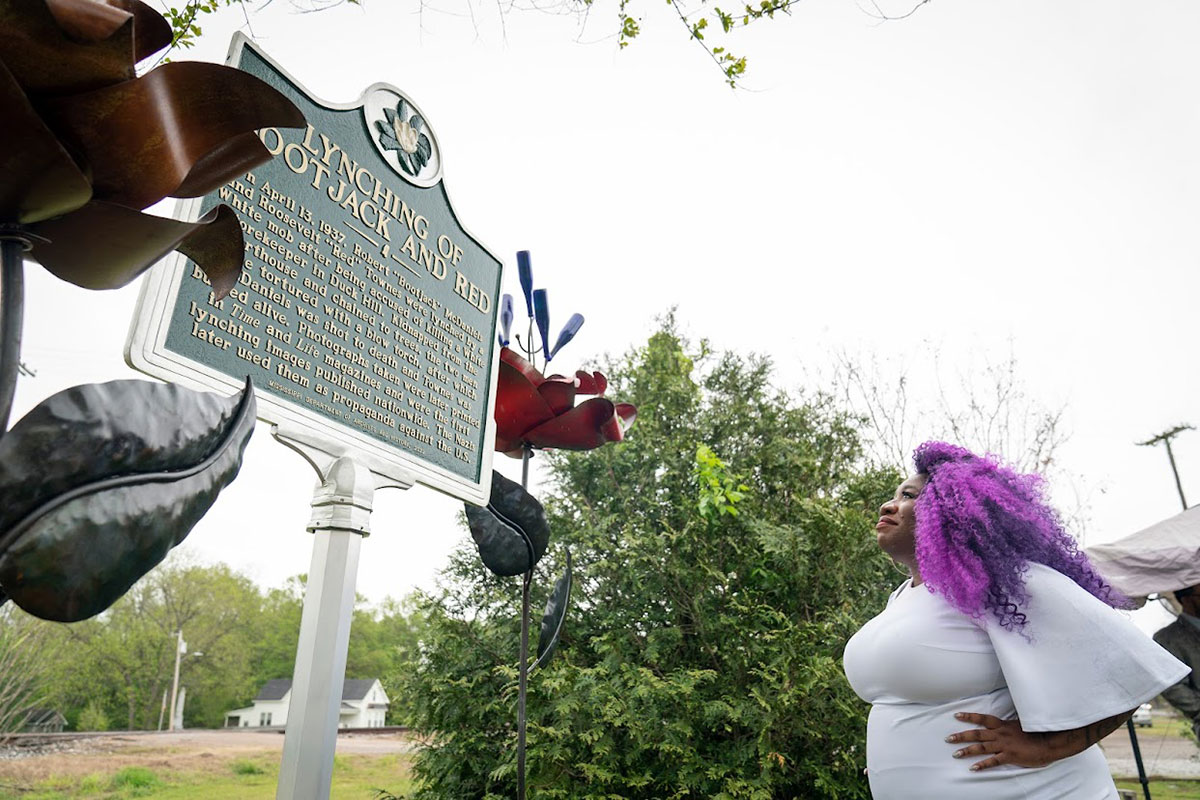Editor’s note: This story contains graphic descriptions of race violence and white terrorism.
DUCK HILL, Miss.—Jimmie Lee lifted her head from her pillow on the night of April 13, 1937, in Duck Hill, Miss. In the distance, the 9-year-old girl heard the faint cries of distressed men. What she did not know was that in the woods east of the town in Montgomery County, a white mob was torturing two Black men to death for an alleged crime. Blowtorches and bullets served as the aggravators’ weapons of choice, but the act of violence was a lynching all the same.
The mob took pride in their work, even managing to photograph the bodies before the lightning, thunder and rain scattered the crowd—a common practice at festive lynchings across the U.S. in the 20th century.
Burnt and bruised from hours of torture and white hate, the bodies remained even after the mob left. The ferocity of the storm would have suggested to some that God was angry. The following morning, a white minister called a Black minister to offer prayers over the bodies of Roosevelt “Red” Townes and Robert “Bootjack” McDaniels.
Townes, unrecognizable and scorched to a crisp, and McDaniels, whose body was riddled with bullets, were buried together in one unmarked grave.
“May the horror of this moment, may the consciousness of this community be seared as much as this man’s flesh to bring righteousness,” the Black minister resounded.
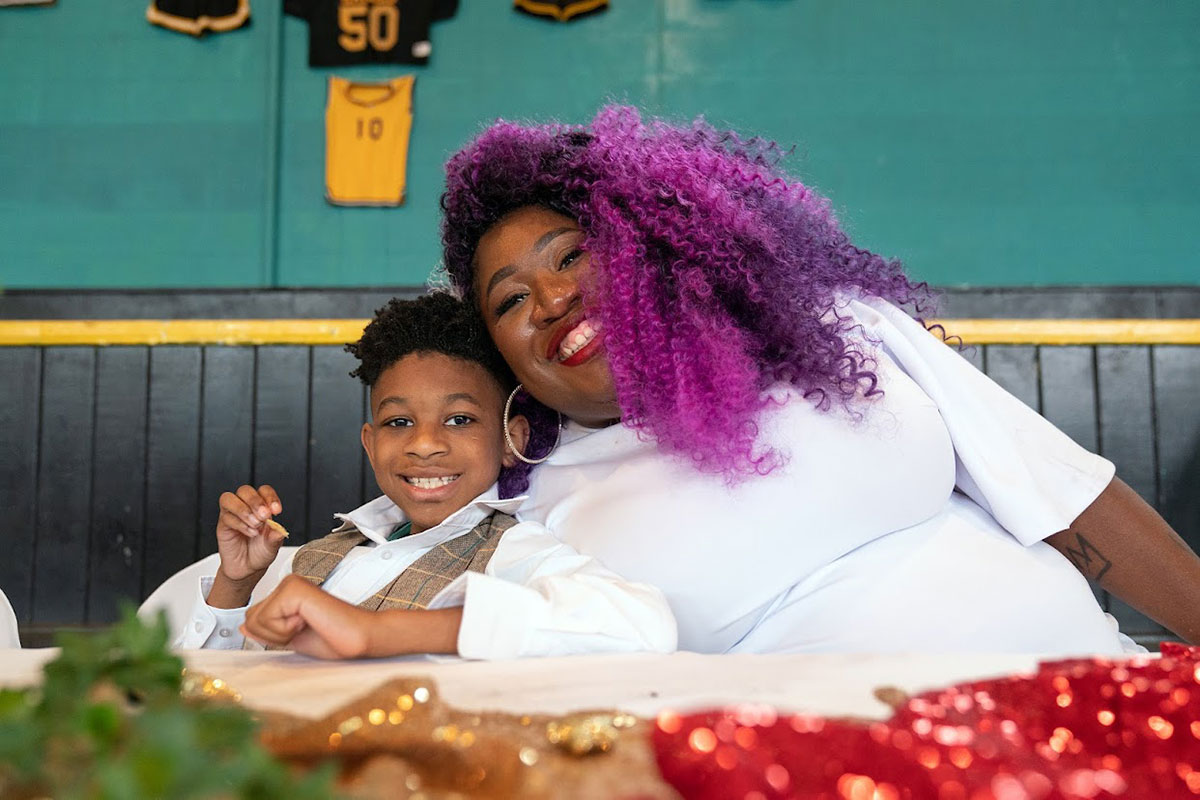
Authorities neither arrested nor charged anyone for the lynching of Townes and McDaniels. For decades, their names and memory had been just as buried as their bodies. Photos of the two Black men tied to pinewood trees with metal chains were the first lynching photos that national presses published, which sparked conversations about anti-lynching laws.
The tragedy that took place near Duck Hill on April 13, 1937, still haunts those who remember. Not much is known about “Bootjack and Red” outside of those gruesome photos, but a Jackson woman, Talameika Brice, is working her hardest to free their story from the confines of that Montgomery County dirt. By the time she is finished, the story of these men will no longer be Duck Hill’s well-kept and most horrific secret.
‘Why Didn’t You Help Them?’
Grandma Jimmie Lee McNeil’s house was always full of life. Aunts old enough to be in the kitchen shelled peas, while cousins flitted around the Duck Hill house. Some were in corners playing with their toys one day while 5-year-old Talamieka Brice sat outside on the front porch. Grandma Jimmie joined her, lounging in a rocking chair in her duster. Grandma Jimmie was a talker, weaving a story that far preceded the little girl’s time on this Earth.
From what little the young Brice could gather, her grandmother remembered hearing the cries of men in the woods when she was a child. Though she was too young to grasp the severity of that story, Brice grew angry no less. With all the sass she could muster, she fiercely asked her grandmother:
“Why could you not let them out? Why didn’t you help them?”
Grandmother Jimmie looked down at her hands. She could muster no words. How do you tell a 5-year-old about the dangers of white racists without shattering her innocence? Grandma Lee sat wordlessly.
“I would have let them out,” Brice said, breaking the silence. “I would have helped them.”
That would have been nearly impossible. On April 13, 1937, a white mob lynched Roosevelt “Red” Townes and Robert “Bootjack” McDaniels, two Black men accused of murdering a white grocery-store owner, George Windham, in Duck Hill.
White men chained both Townes and McDaniels to pinewood trees, beating and torturing them for hours. The mob shot Red in the back after letting him loose and burned Bootjack alive with a blowtorch.
‘A Bus to Their Torture and Death’
Dr. Steven Millner taught southern studies at the University of Mississippi in the 1980s, for which he often read as much as he could about the histories of all Mississippi counties. He commuted between Oxford and Jackson every day, a trip that required him to travel through Montgomery County.
In the course of his research, he read about various atrocities, one of those the Bootjack and Red lynching in Duck Hill. This lynching was especially gruesome, he found, because it involved technology that was new at the time, the former San Jose State University professor told the Mississippi Free Press.
“I had read about most of the lynchings that had taken place in that era, but I had never seen an account where they used blowtorches,” Millner observed. “That’s something that just indicates that the old customs were being changed to reflect the new technology.”
Millner learned that the lynch mob escorted both victims to the murder site using a school bus. During that time in the 1930s, Black people in counties across Mississippi had not been allowed to ride school buses.
“They get a chance to ride a school bus, not to take them to get educated, but to take them to their torture and death,” he said. “The fact that they would use a school bus indicates that this is a lynching where state authorities used their authority to allow an atrocity to take place. This particular lynching in Duck Hill should never be forgotten.”
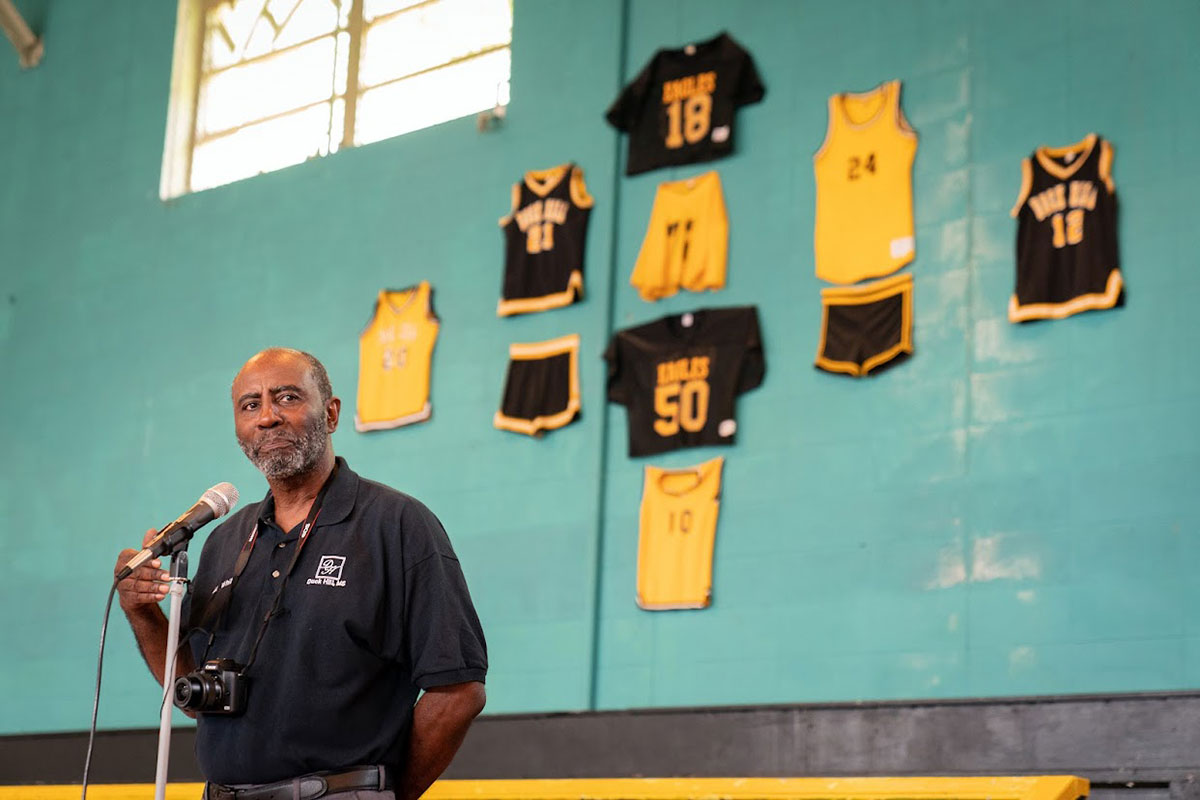
Millner asserts that the lynching caused a firestorm of recognition in other places. Time and Life magazines published the photos of McDaniels and Townes tied to trees, and the Chicago Defender commented on the atrocity. Alternative presses carried the story and helped keep it alive, he explained.
“Once the photos began to circulate in the press, it really put pressure on state authorities throughout the South to begin to put a stop to those kinds of atrocities because it was so bad for business,” he said.
The year 1937 was one of the final years of the Great Depression, so people all over were trying to recover from that period. Due to technological changes in machinery, hand labor was becoming obsolete, forcing people to leave the South and head north for better opportunities.
“When people left places like the Delta, Montgomery County and other places in Mississippi, it hurt; it hurt all kinds of white merchants as their customers left and went to the north,” the former professor said.
Lynchings also helped accelerate the migration process, and people tended to leave for their own safety, Millner explained.
“And the people that tended to leave were some of the most talented local Black folks,” Milner added. “People who had dreams about having a better life and when they saw this kind of thing happen, they tended to leave.”

Millner shared everything he learned from various newsreels and newspaper clippings with his students including Alfonzo White, who went on to become the current mayor of Duck Hill.
White had heard rumors about the Bootjack and Red lynching by then, but taking Dr. Millner’s course was the first time he learned about the incident in a classroom setting. White credits the course as his first real conscious awakening of the event’s significance.
In 1989, White attended a Mckinney family reunion at Center Hill, just 10 miles east of Duck Hill, close to the site where the lynching took place. While speaking with his former in-laws, the Bootjack and Red lynching somehow sprung up in conversation. White learned that the mob accused a third man, Shorty Dorroh, of murdering George Windham, but he escaped.
“What I learned was that besides Bootjack and Red, there was another target; the Mckinneys’ parents helped the third person to get away—they allowed him to change clothes and escape,” White said.
‘Lynching Age’
On the first day of filming for “Five: A Mother’s Journey,” Talamieka Brice and Al White visited the vicinity where the Bootjack and Red lynching took place. Coincidentally, on that same day, police murdered George Floyd in Minneapolis, Minn.
Brice later spoke alongside Mississippi-born author Kiese Laymon about the lynching as part of the Mississippi Department of Archives and History’s “History is Lunch” segment in February 2022. There, she met Director of Special Projects Chris Goodwin, and they discussed the idea of placing a marker in Duck Hill.
When Brice was preparing for the premiere of her film at the Smith Robertson Museum in Jackson, Goodwin assured her that they could help obtain a marker for Bootjack and Red.
“I just kind of teared up at the thought of them being honored,” Brice recalled. “So many people came out, and they were interested in that spot, but nobody had done anything to honor or acknowledge what happened to those men.”
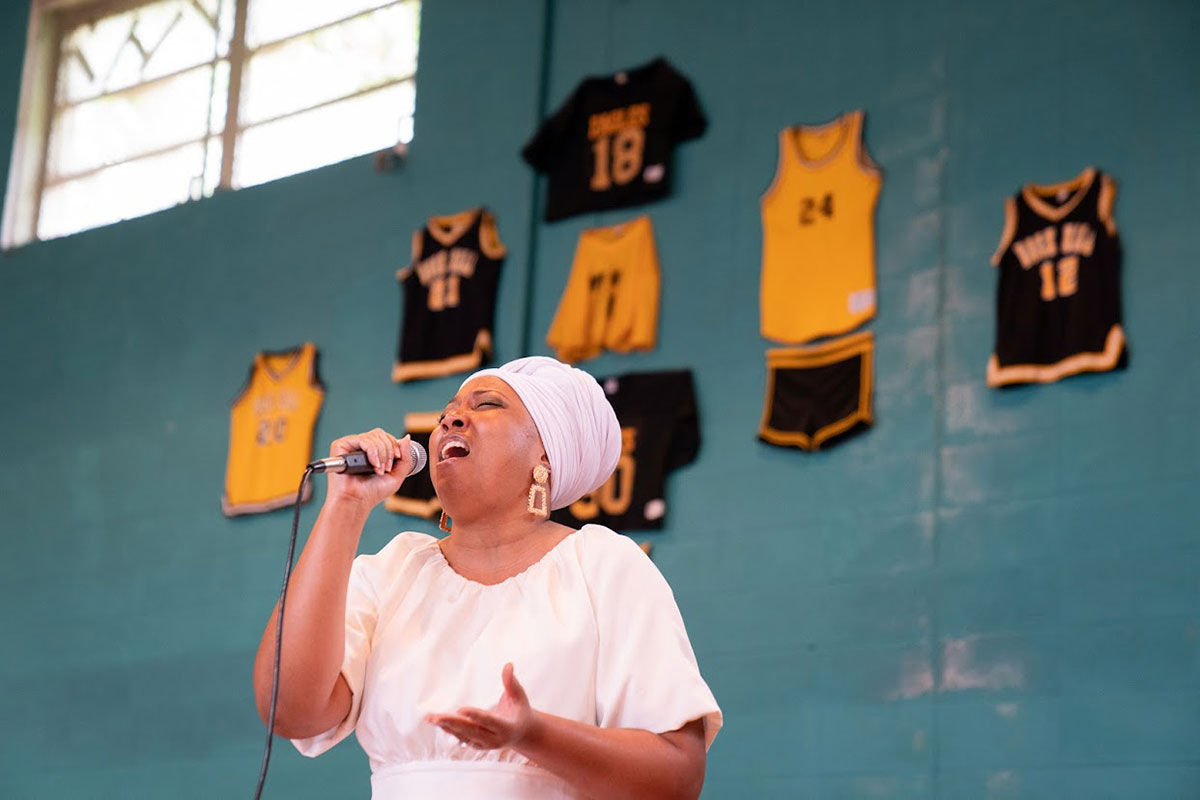
Racist terrorists killed nine people in Montgomery County during what was called the “Lynching Age”. Of the nine people killed, the Bootjack and Red lynching marker is the first of its kind to acknowledge any of the victims, Brice said.
Mayor Al White helped secure the location for the marker, which sits on the city’s town square. Brice had been scouting other areas for the marker location when White suggested the town square, where the caboose—which gospel composer, educator and activist Lucie Campbell was born on—sits.
A historian himself, White has spent a lot of time researching and taking visitors and reporters on tours around Duck Hill. He hopes to pour more into a tourism trail in Duck Hill, a project he began working on before becoming the town’s mayor.
“I thought it’d be more acceptable in terms of telling the story, and she could tell more than one story in that particular setting,” White said of Brice. “I also thought it would be a safe place to honor Bootjack and Red, so that it could be part of the tourism trail. But also so it wouldn’t be vandalized.”
‘A Life Outside of the White Gaze’
On the day of the marker’s unveiling, Talamieka Brice ran around her house looking for the car keys to her SUV. A glance at the clock showed the time to be 9:15 a.m. She and her family were supposed to leave 45 minutes before to make the 11 a.m. ceremony, particularly with the rain that morning slowing down the 104-minute drive from Ridgeland to Duck Hill.
The only immediate solution was to use her mother’s car, a vehicle that had not driven outside the town’s perimeter. With hope and a prayer, Brice and her family hopped into the car in their all-white attire, a color intended to honor the spirits of those who have passed, and they took off. Brice drove safely yet efficiently to the ceremony, knocking a little dust off the car in the process.
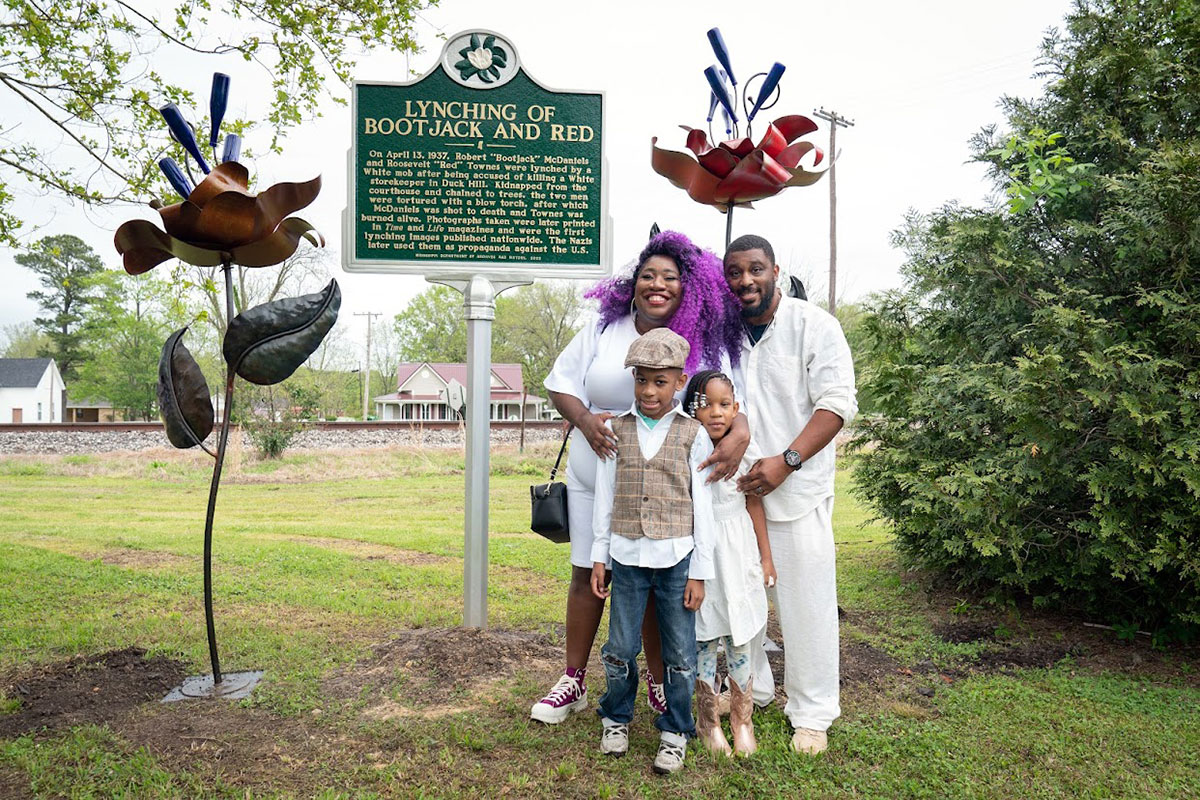
William Hardiman, Brice’s brother, was the master of ceremonies, entertaining the crowd and announcing all who came through the door in her absence. Brice and family arrived right on time, and the stress of the morning faded as the ceremony went on beautifully. In the town square, a blue bag covered the marker and adjoining artistic pieces that accompanied the marker.
Brice removed the bag to reveal a standard green-and-white marker titled “Lynching of Bootjack and Red.” Standing beside it were two bottle-flower sculptures atop a green metal stem and leaves. Each flower is made of metal, one brown and the other red, with dark blue bottles serving as the anthers of the flower.
“I’m really happy with where the marker is,” Brice said. “It’s in a beautiful spot in town square, and it is accompanied by two metal flowers from artist Stephanie Dwyer, who’s amazing and has done work for the Smithsonian.”
“She and I went back and forth several times on the concept of how to incorporate her beautiful bottle-tree flowers,” Brice added. “I felt flowers were more important than trees because they were tied to trees and tortured. So I felt like they did not get the flowers they deserved.”
Each flower represents one of the men murdered: red for Roosevelt Townes and brown for Robert McDaniels.
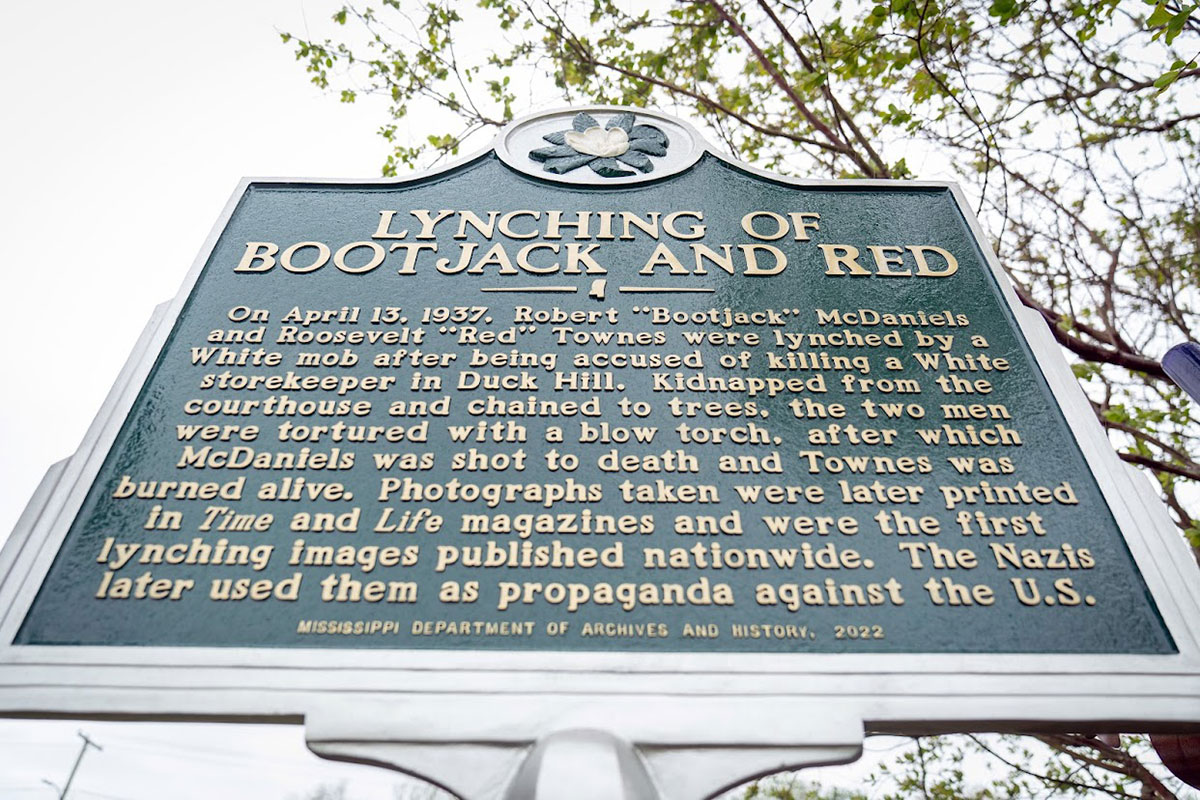
Beyond how they died, little is known about Roosevelt “Red” Townes and Robert “Bootjack” McDaniels. The young men were in their late 20s when they were murdered, and the only known photo of them that exists is the one their murderers took during the lynching.
Brice could not find information on their families or lineage during her research. However, she is looking to change the narrative around Bootjack and Red with the new film she’s working on about them. “I fleshed out what they had of their lives, and … I gave these men full lives,” Brice said. “I gave them identity. I gave them laughter. I gave them a life outside of the white gaze, and I’m really happy with what has been done so far.”
The film will include the marker and commentary from different people, as well as fictional reenactments of how she imagines the men would have lived during that time period. She has written half the script so far.
Brice took inspiration from her grandmother Lona, who was a bootlegger like Bootjack and Red in that era and who may have been running in the same circuits as them, she surmised.
‘We Did It’
After conducting a few interviews, Talamieka Brice and her family piled into her mother’s car and headed back home to Jackson. They made it home around 4 p.m., and with the ceremony over and the marker unveiled, Brice went straight to her bedroom and crashed. She felt like a weight had been lifted, she said. She felt light. She felt reborn.
“After everything, after all those hurdles, after all that opposition of getting it done, trying to raise money, I feel lighter,” Brice explained. “Just knowing that that marker exists and it was voted upon by the Mississippi Department of Archives and History and approved.”
“It exists just like their murder existed, and the repercussions still echo through the community,” she added.” And to know that I had a hand in that gave me a peace that really surpasses understanding. I needed that.”
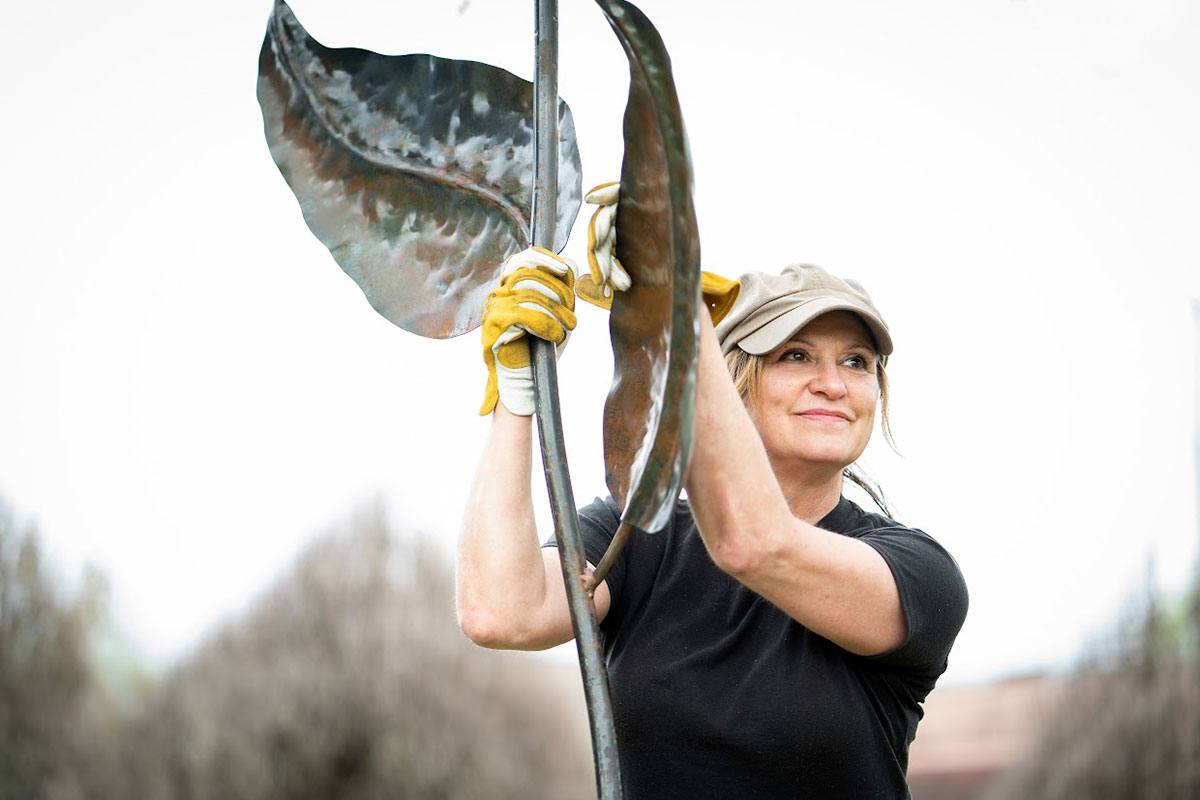
Brice said she could not have done this marker project without the community, sponsors and the many others who opened their wallets and donated. She recognizes that people work hard for their money, so she always tries to be a good steward.
Jimmie Lee was only 9 years old when Bootjack and Red were lynched. She couldn’t possibly have saved them. But who knew, generations later, that her granddaughter Talameika Brice would then go on to spearhead a marker in their memory and create a film about the lynching.
“I went by my grandmother’s grave, and I said, ‘we did it, Big Mama. We did it.’ I was just so happy to tell her that I kind of took up the mantle,” Brice recounted.
To keep up with the progress of the Bootjack and Red film or donate, visit the website here. To learn more about filmmaker Talameika Brice, visit her website here.

